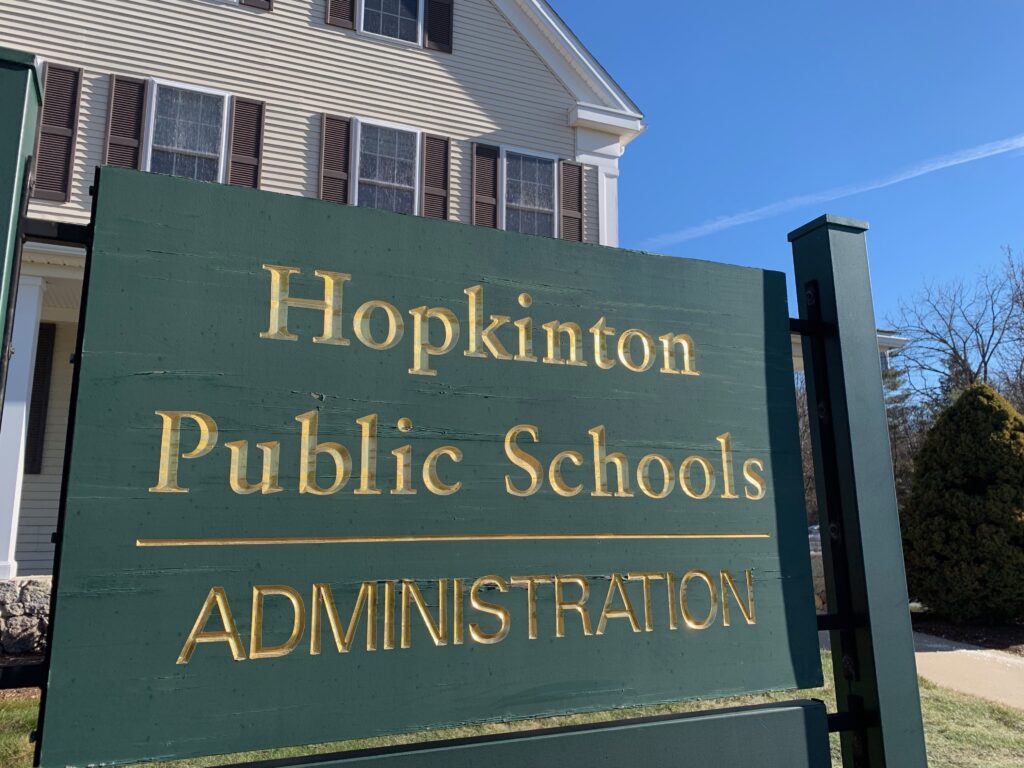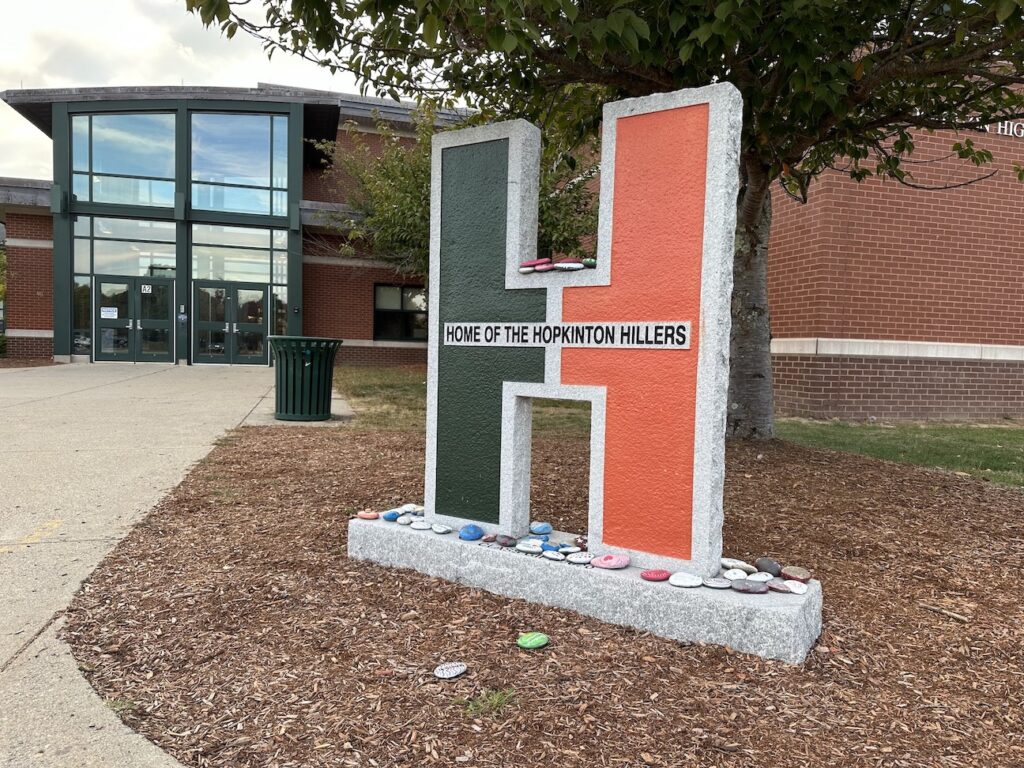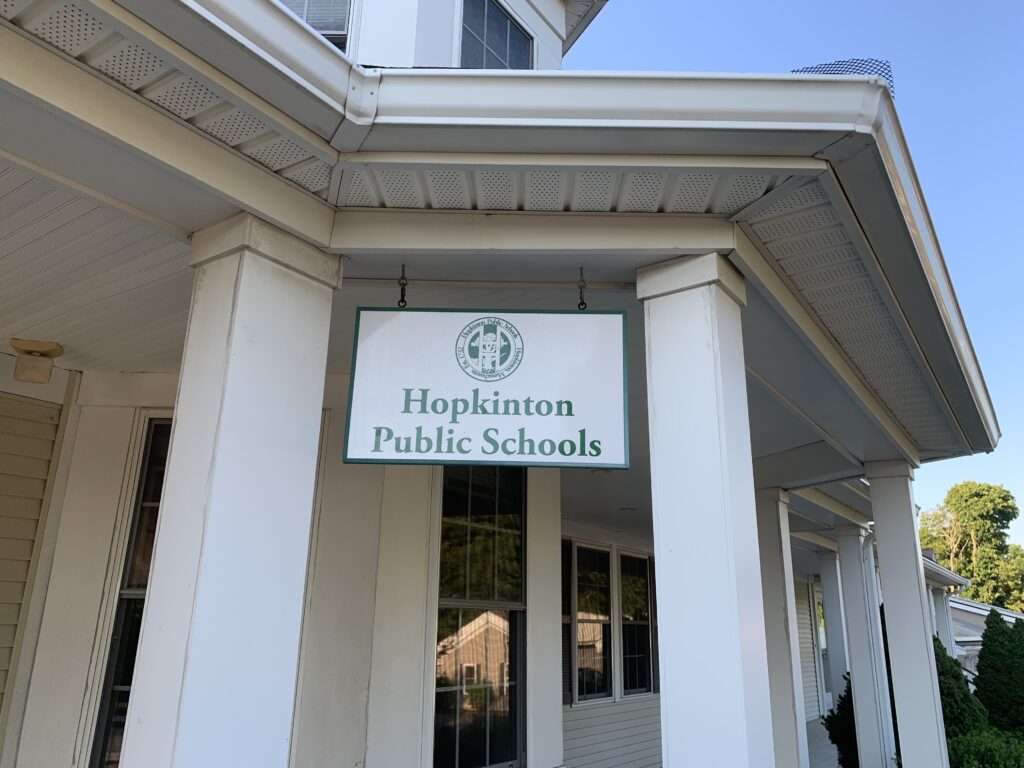The School Committee held its Thursday night meeting virtually due to the town’s spike in COVID-19 cases, which has led to increased absenteeism in school this week both from cases and parents’ fear that their children could contract the disease.
Superintendent Carol Cavanaugh reported that as of 9 a.m. Wednesday, 49 Hopkinton High School students (out of 1,200 total students in the building) were active COVID-19 cases, along with five staff members. At the middle school, 47 students (out of 900) had COVID-19, in addition to 10 staff members.
At the elementary level, Hopkins had 26 students (out of 600) with coronavirus, with six staff members also testing positive. Similar numbers appeared at the other schools, with 25 Elmwood students (out of 600) positive, in addition to six staff members. At Marathon, 20 students out of 600 were positive, as well as 10 staff members.
“So I think what you’re seeing here is at the elementary level is that there’s some kind of consistency here,” the superintendent said. “At the secondary levels, there’s also a kind of consistency.”
However, the student absenteeism rate showed a sharp spike at all schools due to parental concerns over the spread of the Omicron variant. More than 10 percent of the high school students were absent on Monday and Wednesday. At the middle school, 145 and 147 students, respectively, were absent.
Eighty-nine students missed classes at Hopkins on Monday, while 73 were absent on Wednesday. Elmwood had absentee numbers of 117 and 113. Marathon’s numbers were 118 and 102 for those two days.
The numbers most disconcerting to the superintendent, she said, were at Elmwood and Marathon, where more than 100 students were absent.
“These numbers are a little bit alarming,” she said. “I know that parents are a little bit leery of sending their children to school when the Omicron variant seems to be highly contagious.”
Her goal is to keep the schools open, noting that the students who are contracting coronavirus are mainly experiencing mild, cold-like symptoms.
She noted that the rapid antigen test has a low sensitivity, so if a person has a positive antigen test, it means that the person is infectious. However, with a rapid PCR test, a positive result means that there is a level of the virus in the person’s body.
According to the Centers for Disease Control and Prevention (CDC), preliminary data shows that the Omicron variant is three times more infectious than the Delta variant. A person generally does not contract symptoms until three days after exposure and remains able to transmit the virus “for a full 10 days after they develop symptoms, even if they are feeling better.”
For this reason, she advocated for continued mask use for those in school buildings. Because of new CDC guidelines (updated Tuesday), if a person is symptom free, does not have a fever, and wears a well-fitting mask, they can return to school after five days of self-isolation. However, some of the students have been wearing masks under their noses, which causes problems.
However, although the Department of Elementary and Secondary Education (DESE) doesn’t recommend testing before returning to school, the superintendent said that it is important now “because of so many potentially positive kids.”
Tests will be administered in the schools on Monday for anyone who has reached Day 6.
Another policy change is in the definition of contact tracing. It now will be streamlined as of Monday to categorize students who have been in the same classroom as a positive student. This will cut down on the number of administrators who have had to contact parents until late in the evening about what had been deemed close contacts.
Member Joe Markey said the 10-day policy was “overthinking it locally” in a town that is highly vaccinated.
The superintendent explained that if someone tests negative on Day 6, they now can return to school on that day (assuming they are symptom-free), based on the updated CDC guidance.
Chair Nancy Cavanaugh said she approved of the testing policy at this time.
Member Amanda Fargiano added that the “extra step” was a good idea because of the number of students who have received their booster shots is “relatively low.”
Because of the circumstances, the committee did not debate a return to the mask-optional policy but intends to bring it up when the infection rates decline.
Markey noted that the Board of Health asked to meet jointly to discuss COVID-19 policy and a shift to focus on devoting resources to those most vulnerable to the virus. The chair agreed that the joint meeting was a good idea.
Member Lya Batlle-Rafferty noted that COVID-positive students could expose vulnerable people at home, recounting a personal experience in which someone expressed guilt about passing COVID to an elderly relative. She said she didn’t want students to be saddled with similar feelings.
“Their distress and their distraught was tremendous,” she said of the individual who exposed her father to the virus, adding: “The last thing that I want to see in any situation is a child left with that sort of regret.”
School calendar discussed
Assistant Superintendent Jen Parson recounted that a survey from the committee discussing the possible school calendar changes went out in November to high school students, community members, parents and staff members seeking opinions on adding holidays to the school calendar. There were 1,502 responses received, with more than 1,100 from parents/guardians.
Out of the responses, more than three-quarters of parents indicated their students would not need time off and an exemption from homework for any religious holiday, with the number even higher for teachers. Students, on the other hand, were nearly evenly split, with more than 54 percent saying they did not need an exemption.
For parents and faculty, the top priority was keeping continuity in education for students in the fall, when several cultural holidays occur. Students, however, thought that maximizing diversity in recognizing cultural holidays was of primary importance to stress inclusivity.
A third of parents and faculty wanted to keep the current holidays, while just over 35 percent wanted to reduce the number of non-mandated holidays. More than 57 percent of students wanted to keep the current calendar.
The superintendent stressed that, despite “countless hours of debate,” which got emotional at times, there was no solution that would please all groups. While extending the school year was not a concern to any group, the school district is not allowed to teach into July.
The more inclusive calendar, which includes the Lunar New Year and Eid Al-Adha and Eid Al-Fitr, was recommended by a majority vote.
No vote was taken on the recommendation at this meeting. A public forum will be held before it is implemented, with discussion planned for the Jan. 20 School Committee meeting.
Fargiano noted that Christmas Eve had been unintentionally omitted from the calendar. Although it is not a federal holiday, many felt that it was culturally significant. She added that many of the holidays discussed occur in the fall, which was why the focus was on that part of the year.
Elmwood School Building project moves forward
The superintendent announced that the proposed new building for the Elmwood is now in the feasibility stage with the Massachusetts School Building Authority (MSBA). A draft of an owners project manager (OPM) proposal is being prepared for submittal to the MSBA.
“I think the community can take a look at this and get pretty excited because this project is getting some legs,” she said.
Budget discussion next week
Next Thursday’s meeting will focus on the department’s budget. The superintendent noted the growing enrollment numbers, as well as the budgetary needs of students who have disabilities that require them to be placed out of district to receive necessary services.



















0 Comments